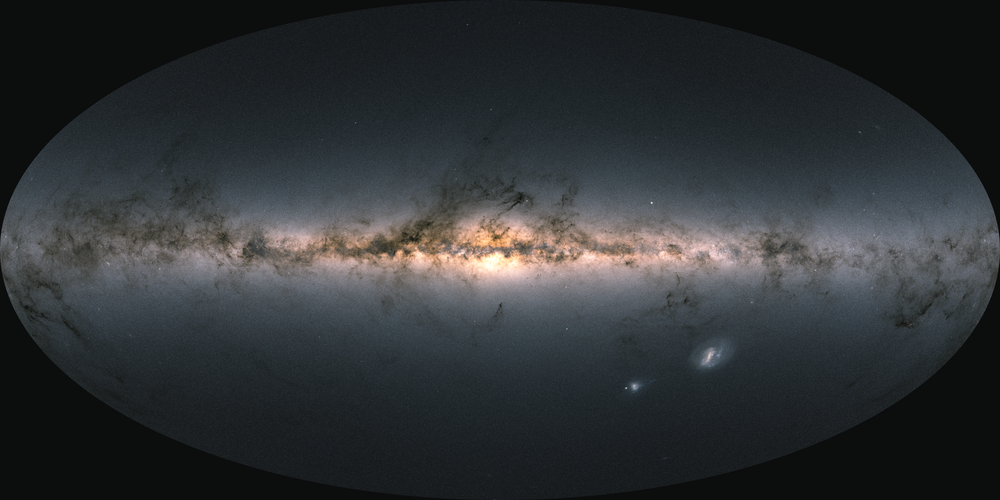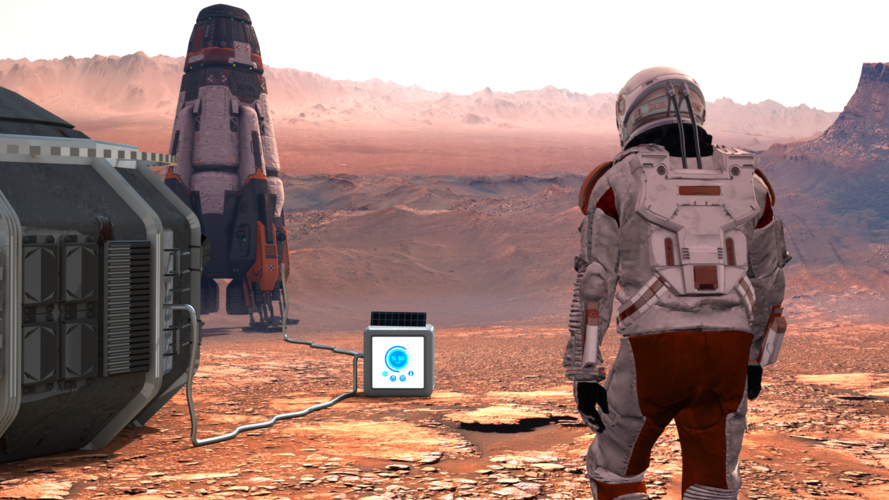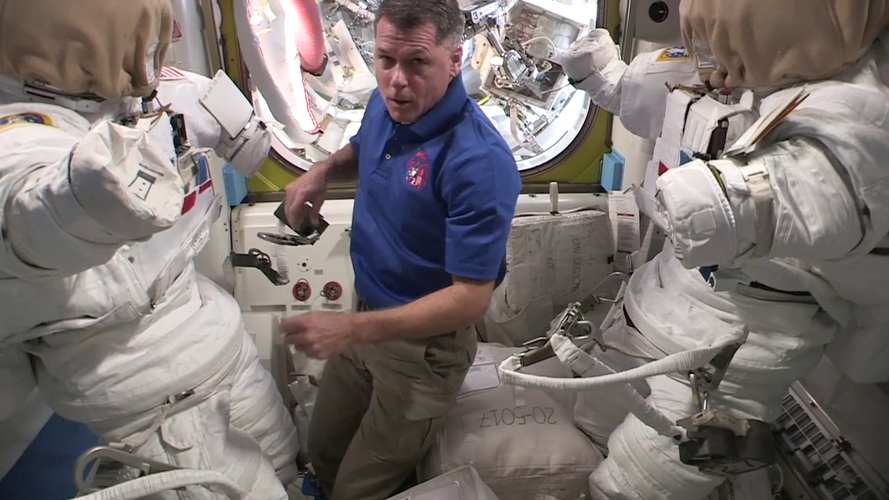
Copernical Team
Gaia finds parts of the Milky Way much older than expected

Using data from ESA’s Gaia mission, astronomers have shown that a part of the Milky Way known as the ‘thick disc’ began forming 13 billion years ago, around 2 billion years earlier than expected, and just 0.8 billion years after the Big Bang.
Turning astronaut waste into fuel on Mars
 Image:
Turning astronaut waste into fuel on Mars
Image:
Turning astronaut waste into fuel on Mars Australia wants a space industry. So why won't we pay for the basic research to drive it?

In the past few years, Australia has formed its own space agency and launched a defense "space command". Billions of dollars for defense, and hundreds of millions for civilian space, have been allocated from the public purse to develop capability in this growing sector.
This funding covers the Moon-to-Mars Program, the SmartSat Cooperative Research Center, the Modern Manufacturing Initiative, opportunities in defense, various state-funded projects such as SA-SAT, and more.
This level of investment is unquestionably a good thing. But the great majority of it supports applied research and engineering, and commercialization of outcomes. None of the new funding goes to basic research.
In the United States, Canada, United Kingdom, France, Germany, Italy, India, South Korea, China, Russia, and United Arab Emirates—to name a few—basic research in space and planetary science, and science missions, are key elements in strategies to grow their sectors. In Australia, this kind of fundamental work only gets around A$2 million a year. It hasn't budged in a decade.
Why basic research is important
Spacewalk tools with Thomas and Shane
 Video:
00:08:35
Video:
00:08:35
Use the right tool for the job is an often heard saying for any technician, or home hobbyist, and in spaceflight the advice counts double. When astronauts head on a spacewalk outside the International Space Station their tool belt is analysed, choreographed, prepared and checked in detail.
Many tools are made to measure, but in addition they are ordered on the tool belt to be easy to access at the time needed. When everything floats each tool is tethered to the spacewalk suit as well.
In this video ESA astronaut Thomas Pesquet is reciting the tools he and NASA
NASA confirms more than 5,000 planets outside the solar system
 The total number of confirmed planets in the universe ticked past 5,000 this week with the addition of 65 exoplanets, NASA says.
The space agency said the confirmed planets are just a small fraction of the billions of planets the Milky Way likely holds. That number only increases when considering galaxies outside our own.
The newly added exoplanets - worlds that exist outside ou
The total number of confirmed planets in the universe ticked past 5,000 this week with the addition of 65 exoplanets, NASA says.
The space agency said the confirmed planets are just a small fraction of the billions of planets the Milky Way likely holds. That number only increases when considering galaxies outside our own.
The newly added exoplanets - worlds that exist outside ou Characteristics of Apophis, the asteroid that will approach Earth in 2029
 The study, in which the Universidad Carlos III de Madrid (UC3M) and the Universidad Estatal Paulista Julio de Mesquita Filho (Julio de Mesquita Filho Paulista State University) (UNESP) of Brazil are participating, analyses the surface and dynamics of Apophis, an asteroid that will pass close to Earth in 2029.
The Apophis asteroid was discovered in 2004 and has been monitored since then due
The study, in which the Universidad Carlos III de Madrid (UC3M) and the Universidad Estatal Paulista Julio de Mesquita Filho (Julio de Mesquita Filho Paulista State University) (UNESP) of Brazil are participating, analyses the surface and dynamics of Apophis, an asteroid that will pass close to Earth in 2029.
The Apophis asteroid was discovered in 2004 and has been monitored since then due Ryugu be a remnant of an extinct comet
 Asteroids hold many clues about the formation and evolution of planets and their satellites. Understanding their history can, therefore, reveal much about our solar system. While observations made from a distance using electromagnetic waves and telescopes are useful, analyzing samples retrieved from asteroids can yield much more detail about their characteristics and how they may have formed. An
Asteroids hold many clues about the formation and evolution of planets and their satellites. Understanding their history can, therefore, reveal much about our solar system. While observations made from a distance using electromagnetic waves and telescopes are useful, analyzing samples retrieved from asteroids can yield much more detail about their characteristics and how they may have formed. An Sol 3421: Close Encounter with a "Gator"
 Curiosity is investigating the different surface expressions of the Greenheugh pediment, and the weekend drive put the rover right next to some "gator-back terrain" - some evenly spaced ridges with a blocky expression, as seen in the above Navcam image. Today's one sol plan is focused on a close encounter with one of these ridges through contact science and remote sensing.
The plans starts
Curiosity is investigating the different surface expressions of the Greenheugh pediment, and the weekend drive put the rover right next to some "gator-back terrain" - some evenly spaced ridges with a blocky expression, as seen in the above Navcam image. Today's one sol plan is focused on a close encounter with one of these ridges through contact science and remote sensing.
The plans starts Drilling into Mars with Lasers
 Perseverance is adding a pop of color to Mars' regular repertoire: purple. The color palette of Mars' surface is one of muted hues. Burnt orange tones reflect the iron-bearing minerals that have rusted under an oxidizing atmosphere while soft greys characterize the un-rusted parent rock.
However, over the past year we have seen prominent patches of purple peppered atop the rocks. The patch
Perseverance is adding a pop of color to Mars' regular repertoire: purple. The color palette of Mars' surface is one of muted hues. Burnt orange tones reflect the iron-bearing minerals that have rusted under an oxidizing atmosphere while soft greys characterize the un-rusted parent rock.
However, over the past year we have seen prominent patches of purple peppered atop the rocks. The patch Mars helicopter Ingenuity completes 22nd flight
 NASA's Mars helicopter Ingenuity completed its 22nd flight over the weekend, the space agency announced.
"The trip lasted 101.4 seconds and Ingenuity got up to 33 feet in the air," NASA's Jet Propulsion Laboratory said in a tweet Monday. "The team is planning another flight perhaps as early as later this week."
During its first 21 flights, Ingenuity flew a total of 15,247 feet an
NASA's Mars helicopter Ingenuity completed its 22nd flight over the weekend, the space agency announced.
"The trip lasted 101.4 seconds and Ingenuity got up to 33 feet in the air," NASA's Jet Propulsion Laboratory said in a tweet Monday. "The team is planning another flight perhaps as early as later this week."
During its first 21 flights, Ingenuity flew a total of 15,247 feet an 